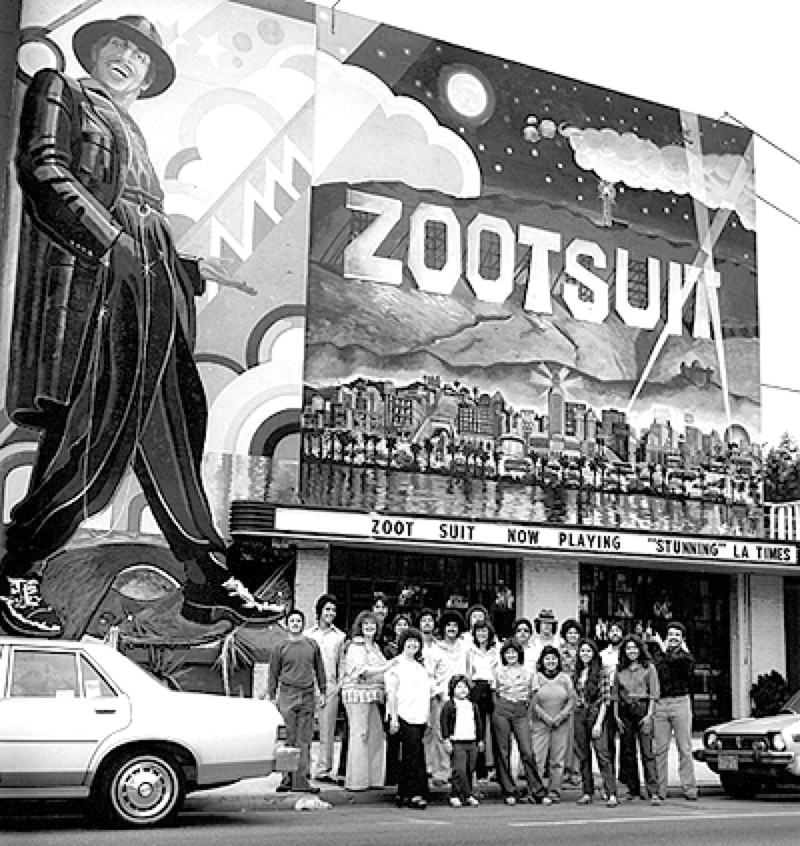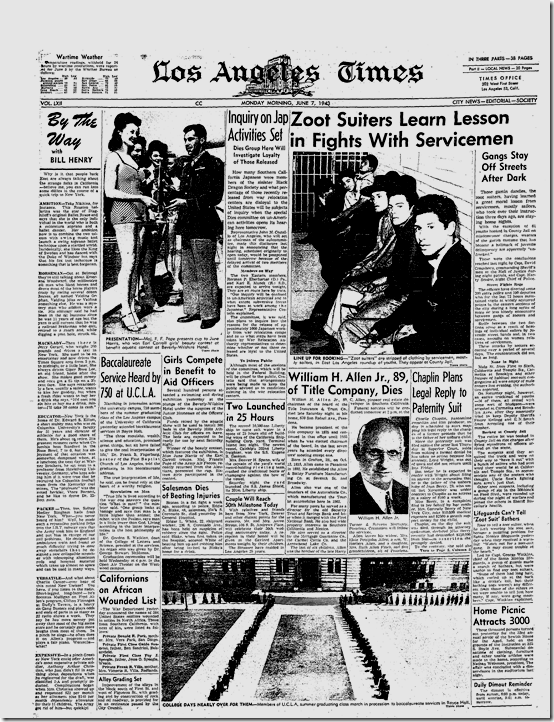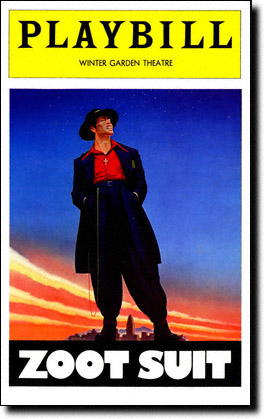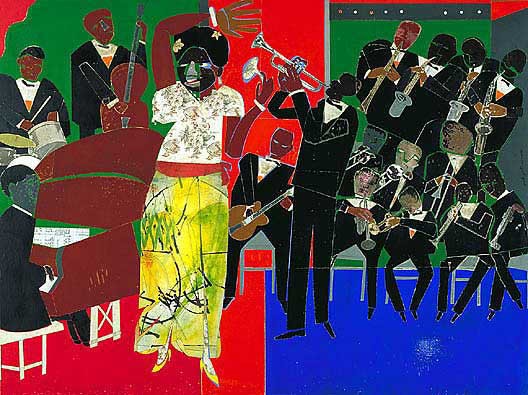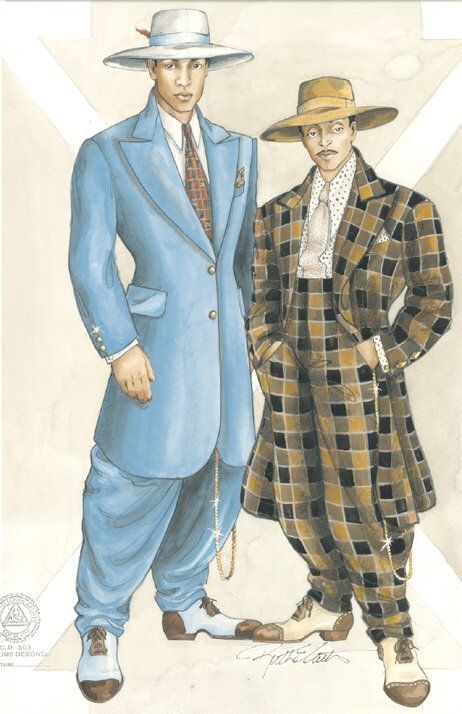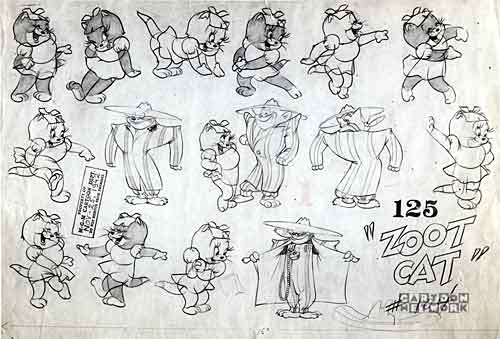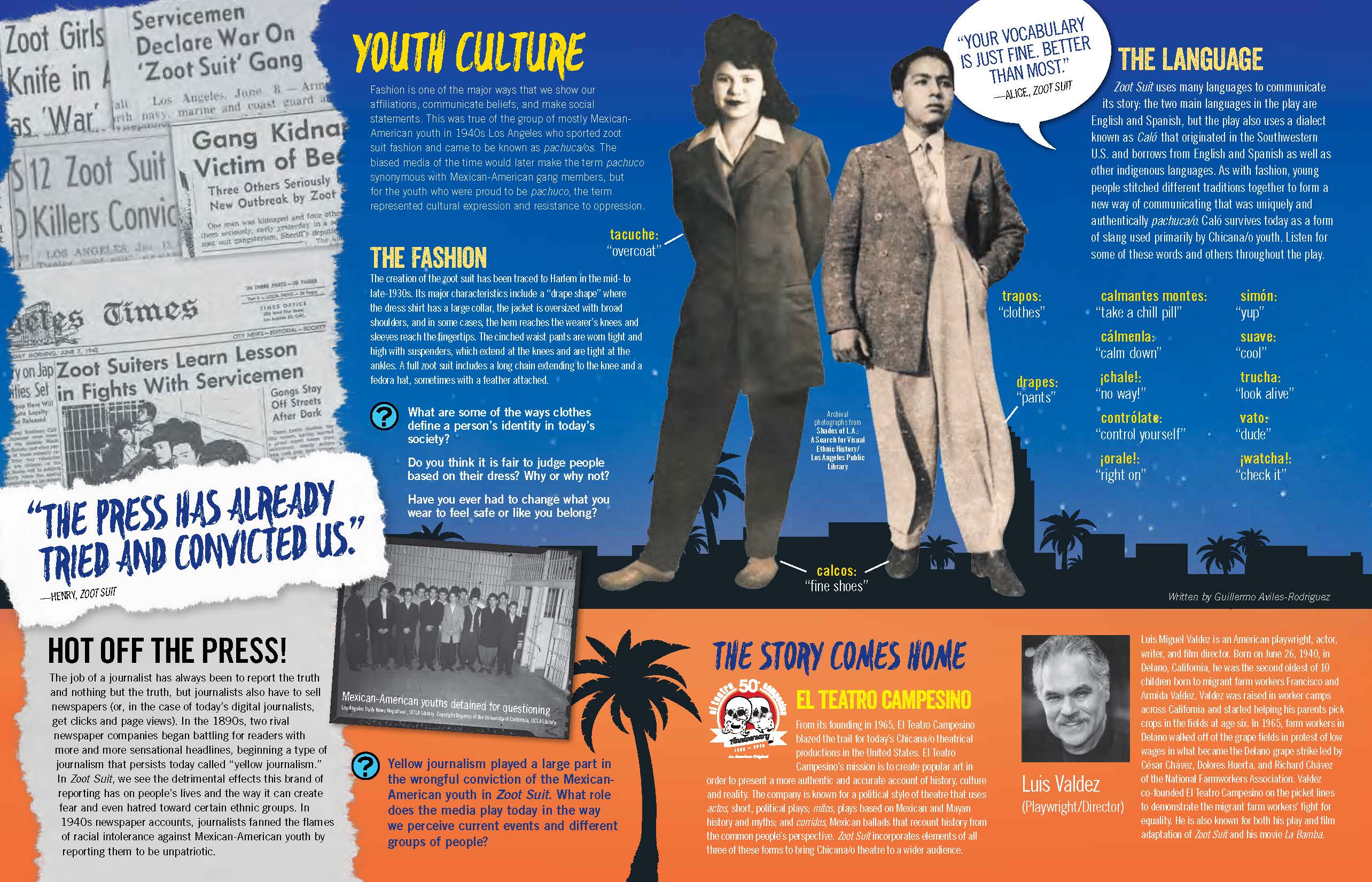If you download or print anything from this site, please consider making at least a $10.00 donation through PayPal.
I can maintain and expand this site only through your help.
Zoot Suit by Luis Valdez |
||
From the moment El Pachuco glides on stage, we find ourselves drawn into a jazzy savvy world of rebellion. Using English, Spanish, and the dialect Caló, Valdez weaves music, slang, dance, and fashion into a fascinating tale of cultural pride, creative spirit, and self-determination. Drawn from the American immigrant experience during World War II, the Sleepy Lagoon murder trial of 1942, and the Zoot Suit Riots of 1943, Henry Reyna and the other members of the 38th Street Gang must navigate a landscape of racial intolerance, unjust law enforcement, media manipulation, and a discriminatory legal system. Introduce the play with a short YouTube clip: Spanish Stage Production or Movie Exerpt |
||
Background
Perhaps the best introduction to the context of the play is the sixty-minute PBS American Experience video on the Zoot Suit Riots. Also available from iTunes. Viewing Guide. A twenty-minute overview, Zoot Suit Riots: Causes and Riots, is an edited version of the PBS video. For a six-minute introduction to the period, A Look at Injustice During the Zoot Suit Era works well and can also serve as a model for student productions. Pachucos During War Times is a six-minute exerpt from the Latino Americans PBS series Latino Americans.
|
Videos Screenplay and direction by Luis Valdez, the film version of this play is literally a play within a play. Essentially filmed as a stage performance that occasionally overflows into the audience, the audience includes the “real” people acted on stage. Movie available for rent or purchase on YouTube and iTunes. YouTube offers the full performance of Monterrey High School. Not bad at all. |
|
Websites The CNT (Compañia Nacional de Teatro) Website is as good as it gets. Many thanks to the hard work of everyone at the Mexican National Theatre and to Janet Johns for the Teaching Curriculum. The Discovery Guide includes:
My handout which combines all the Teaching Curriculum in a single Word or PDF document. |
Teacher Guides Zoot Suit from Masterplots is brilliantly written. Really. Active verbs, vivid descriptions, concrete details. Overviews usually plod; this one dances. Robin Harris has produced a PowerPoint/PDF that thoroughly covers the background and the follow-up to the real story. Attractive and accurate. 42 slides. Teaching Curriculum from CNT (discussed below). Overview: Zoot Suit is from Drama for Students. Includes scene-by-scene summary and character lists. Overview: Zoot Suit is from Literature and Its Times. Includes historical context and a bibliography. Zoot Suit from Gale Research Group is the most extensive analytical overview. Criticism In “The Riddle of the Zoot,” Robin Kelley focuses on the symbolism of the zoot suit for blacks, and particularly for Malcolm X. Includes eleven questions. In “Zoot Suit and Style Warfare,” Stuart Cosgrove focuses on the symbolism of the zoot suit for Latinos. Includes six questions. “The Zoot Suit: Its History and Influence” by Holly Ashford is a sophisticated analysis of its cultural, political, and social implications. Because she is a professor of fashion design and merchandising, Ashford's perspective is intriguing. “Zoot to Boot: The Zoot Suit as Both Costume and Symbol” by Sarah Elizabeth Howard includes insights about art, music, comedy, cartoons, and costume. “Looking for a Third Space: El Pachuco and Chicano Nationalism in Luis Valdez’s Zoot Suit” by Granger Babcock is an in-depth analysis of the character and his political and cultural influences. “Saying ‘Nothin’: Pachucas and the Language of Resistance” by Catherine S. Ramírez analyzes the power of language, particularly slang. |
|
“Zoot Suit: Chicano Music-Drama” presents the New York Times review of the Broadway debut of the play in 1979. “Filmed from the Stage” in the New York Times reviews the movie debut in 1982, emphasizing the movie as a kind of metaplay. “Zoot Suit Tailored for Contemporary Audience” is the focus of Variety’s 2000 review of the Chicago stage performance. “A Freshly Pressed Zoot Suit” in American Theater reviews the CNT debut of the play in 2010. “Zoot Suit, a Pioneering Chicano Play Comes Full Circle” in the 2017 New York Times review of the Los Angeles revival of the play. “L.A. Theater Review: Zoot Suit” is the Variety review of the same revival performance. |
Music
|
|
A fascinating look at the role of clothing in suppression and rebellion, A History of Racism in Fashion covers many eras. Includes an examination, advertising, concepts of beauty, and some parodies. El Pachuco, a business that sells Zoot Suits and accessories, has an excellent history (and selection). The Zoot Suit as Rebellion offers an overview. “Zooting Up,” a short overview from Smithsonian magazine, focues on the suits as icons. “The Zoot Cat,” a 1944 Tom & Jerry cartoon, is just for fun. A real cool cat.
|

|
|
Primary Sources The Stanford History Education Group offers a short introduction, two primary sources and a Reading Like a Historian worksheet on the riots. The Zoot Suit and History includes images of actual newspaper articles from the time. Good for primary sources. Primary sources can also be used as a possible synthesis prompt. |
Full Text Watching the film is crucial to understanding this play, since students may have difficulty visualizing some of the scenes and because of the language. Having a written text is equally important for analysis, since footnotes translate the languages. This play is also sometimes hard to find in print. Be warned that some of the language is sexually suggestive or racially inflammatory. Only 33 pages long, packed with colorful language and controversial themes. I use this play with Ralph Ellison's Invisible Man. This is the full text. |
|
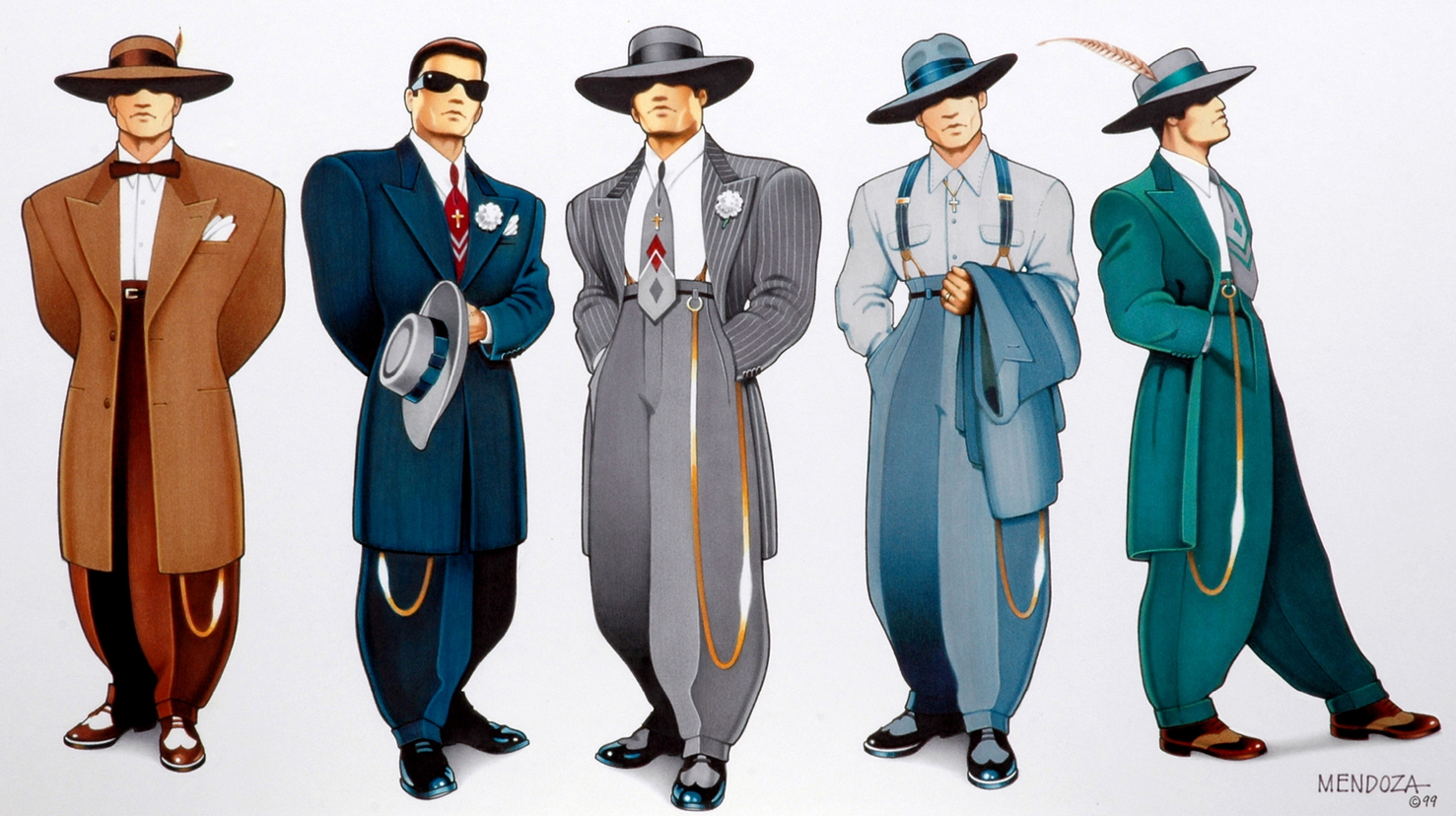
Script Writing: Final Scene of Zoot Suit creative writing Dialectical Journal assignments for Zoot Suit Zoot Suit Art: Posters for this play are especially powerful. Four are offered for analysis. Students could also be asked to create their own poster.
|
||
|
Interview in 1982 (2 weeks after film opened) |
||
If you download or print anything from this site, please consider making at least a $10.00 donation through PayPal. |
||
